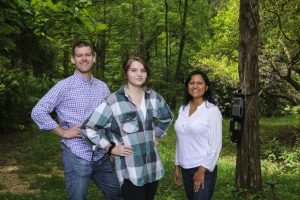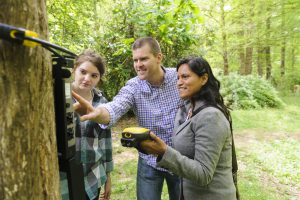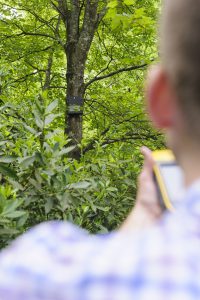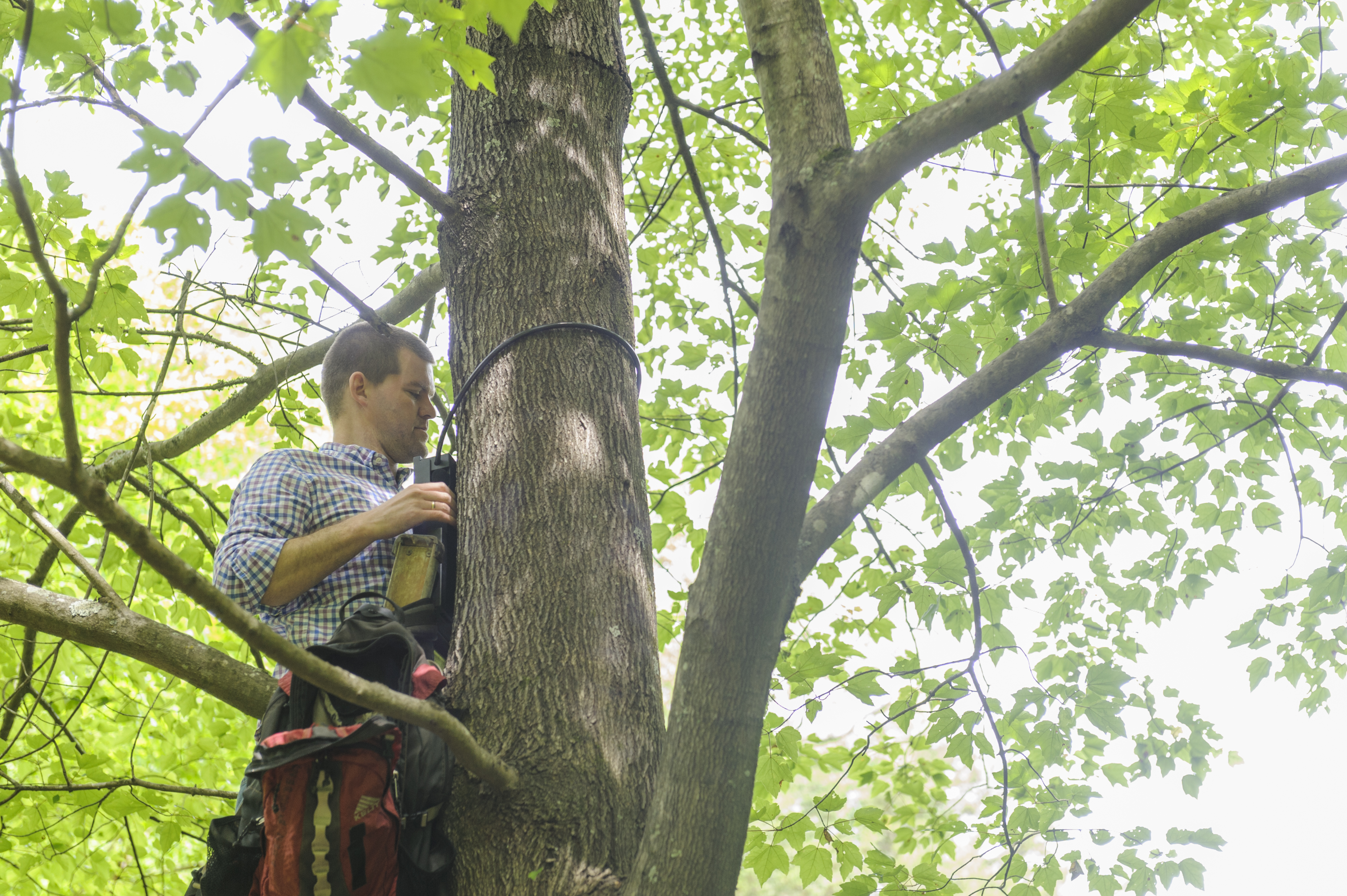By Bobby Mathews
Photos by Jeff Hanson

Woodsy Owl might not give a hoot—but if he did, a group of researchers at The University of Alabama would likely hear him.
Drs. Eben Broadbent and Angelica Almeyda Zambrano, along with undergraduate student Kathryn Shay, are using technology to understand how birds migrate. They’ve installed multiple recording units within UA’s Arboretum, a green, leafy 60-acre sanctuary filled with both native and exotic plants and that doubles as a type of living laboratory.
The units, capable of recording weeks of birdcalls, enable the researchers to undertake a census of the fowl at the site. These researchers – part of UA’s Spatial Ecology and Conservation Lab – hope they’ll be able to create a baseline to use for further research into changing bird populations.
“One thing we’re looking for is the interaction among native and exotic bird species and how those might cause changes in bird composition and abundance,” Broadbent says. “Understanding future changes in bird populations requires having a good understanding of the present population dynamics and then extending this monitoring approach in the future.”
While Alabama supports an enormous amount of biodiversity, it is also among the greatest at risk for loss of species, and that makes the Yellowhammer State an ideal area for a project like this. Potential changes in climate and further encroachment of wild land could make that problem even worse.

In the past, this kind of research would have taken a much larger physical toll. Long hours logging birds would have been the norm. But new technology allows researchers to identify unique birdcalls at any hour of the day or night—and best of all, the equipment records for up to 60 days at a time.
“The audio recorders will collect data continuously, and we’ll use customized software to hear and visualize that data,” Zambrano says.
The data can be viewed almost anywhere, which Zambrano demonstrated by pulling up a birdcall on her smartphone. The sound is audible, but the software also offers a visual, custom algorithm so that researchers can compare the number of bird species.

However, the project isn’t just tech-based. The researchers are also relying on local birdwatching groups, including the Birmingham Audubon Society, state environmentalists and the caretakers at the arboretum to gather data. Working with these participants Broadbent terms ‘citizen scientists’ – in partnership with a rigorous scientific method – enhances the research, the researcher says.
Like any research project, there will be tons of information to pore over. That’s where Shay comes in.
“There’s going to be a lot of material to comb through,” Shay says, “and I’m excited because I’m kind of the front line for that part of the research. It’s a big responsibility, but challenges like this are one of the reasons I chose to come to Alabama.”
But the census is really just the first part of a long-term project.
“Once we’ve collected data for eight to 10 months, we’re planning to link the changes in the bird species numbers with climatic data from local climate stations to understand how seasonal patterns and other variables are affecting bird populations in the Arboretum,” Broadbent says.
“Once we’ve perfected our methodology, we’ll use that, the data collected and the results we’ve generated from this study, to hopefully form a large network of similar systems covering the state of Alabama.”
Ideally, the methods used in this project can be adapted for use in other states. As the information grows, it will begin to show a clearer picture of exactly what is happening in bird populations across the United States.
“The basic thing that we hope will eventually come out of this is that we’ll help enable targeted conservation and research on bird populations,” Zambrano says.
Broadbent is an assistant professor and Zambrano an adjunct professor in the geography department within UA’s College of Arts and Sciences.
